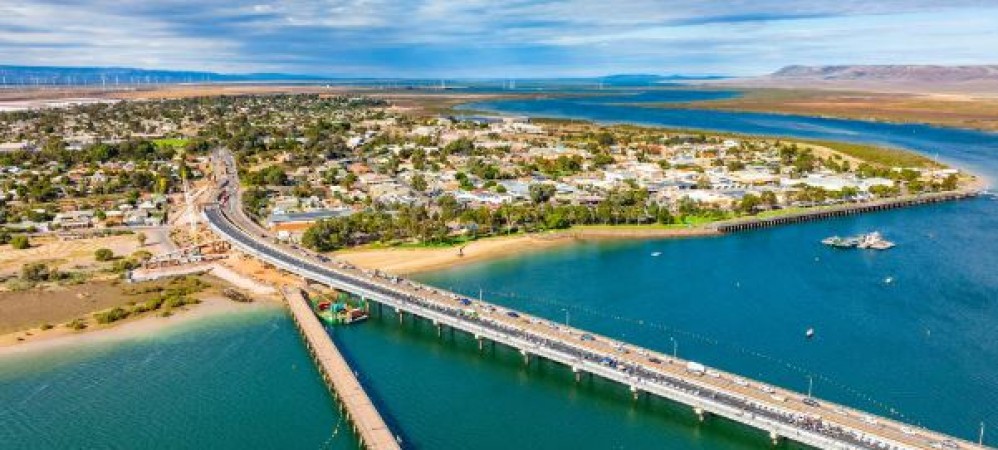
Port Augusta is the small city of South Australia. There was a time when Port Augusta was primarily a port. Laying at the top of the Spencer Gulf it was vital to all the properties in the Flinders Ranges and beyond. The port was the point where wheat and wool were loaded on clipper ships and transported around the world. By the 1970s that had stopped and the town, exploiting its unique position, became the starting point for tourism for the Nullarbor Plain, the Flinders Ranges and all journeys north to Central Australia and the Northern Territory.
Port Augusta really does sit at a crossroads and, by strange serendipity, the roads really do head to the primary points of the compass - north, south, east and west. Not surprisingly everyone who passes through Port Augusta needs to stop at the Wadlata Outback Centre. It provides valuable travel advice and is a wonderful introduction to the lives and history of the Aboriginal desert people who, for over 40,000 years, have lived in the lands that surround this strange city.
Also Read: Hollywood Sikh Temple: Promoting Interfaith Dialogue and Understanding
The Harbour, which became Port Augusta, was reached by Alexander Elder and John Grainger on 24 May 1852. They named it Port Augusta after Lady Augusta Sophia Young, the wife of the Governor of South Australia, Sir Henry Edward Fox Young. The local Aborigines knew the area as Curdnatta, meaning "sandy place".
Places you must visit at Port Augusta:
Wadlata's Tunnel of Time
An opportunity to experience the world of the Aborigines who has lived in the area over the past 40,000 years and the European settlers. This interactive experience starts with the creation of the Flinders Ranges, includes fossils and a prehistoric lizard, recounts Aboriginal stories from the Dreamtime, tells stories of early settlers and the ongoing battle to get adequate water supplies, explores the desert fauna and flora, includes both School of the Air and Royal Flying Doctor experiences and looks at opal mining and the legendary outback postman, Tom Kruse.
Also Read: San Jose Gurdwara: Sikh Sanctuar
Wadlata Outback Centre
Located at 41 Flinders Terrace the Wadlata Visitor Information Centre (which includes the Wadlata Tunnel of Time) is an outstanding, award winning information centre. It provides extensive information and maps so the traveller can plan their trip into the Outback. It provides information about the animals which roamed the area thousands of years ago, about the Aborigines who moved through the area, about the early European explorers and the stockmen, pastoralists and miners who opened up the Outback.
St Augustine's Church
The foundation stone for the church was laid in 1868 and the first service held in 1870. The church was replaced in 1882. The bell was purchased in 1871 for the first church and the hall behind the church was used as a school for boys after 1878.
Also Read: India's Top Nine Locations for Culture Lovers
Town Hall
The original Town Hall was completed in 1887 with stone quarried at Quorn. It was burnt down in 1944 but successfully rebuilt with the original facade in 1946. Although somewhat unloved it still has a ballroom and a two-storey theatre.
Mural on the Hill
Located on the corner of Flinders Terrace and the Augusta Highway is a mural made from 2500 hand-painted tiles. It was created by artist Diane Turner and depicts the history of the area from the Dreaming through to the present day.
Also Read: Exploring the Enchanting Land of Finland: A Nordic Jewel